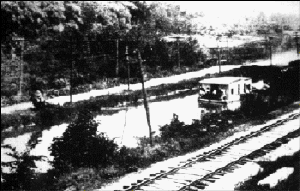 |
100 Years Ago
Agriculture
Black History
Canal
Civil War
Downtown
Education
Entertainment
Events
Gold Rush
Immigration
Indians
Industry
Landmarks
Law and Order
Organizations
People
Pioneers
Politics
Sports
Transportation
War
Women
|
 |
Why Shelby County, Ohio?
On
March 01, 1803, the state of Ohio became the first state to be admitted to the Union from
the Northwest Territory. During the early 1800s, Shelby County, like the rest of Ohio,
with its fertile soil, vast forests, rivers and plentiful game, was an inviting area for
settlement by early pioneers. Rugged hills in the south roll gently into a level
uplands in the north. Shelby County constitutes the highest altitude for the railroad or canal within this area (1,078 feet above sea
level). The highest point in Ohio is 1,550 feet in Bellefontaine (Logan County). Perhaps
its most important natural resource is the Great Miami River, which, combined with many
creeks, creates a very good waterway system. Because of these waterways, Shelby County
settlers were able to successfully penetrate this heavily forested area by boat in their
search for a place to live. Many of the initial settlers lived near Loramie Creek and the
Great Miami River Basin. |

|
| Of
course, other travelers simply passed through, venturing further south to settle in
Kentucky and Tennessee or moving further west, tempted by the amount of land offered to
them at extremely low prices. In these early years, Ohio was populated primarily by the
animals who lived in the dense forests. Even the Indians had not stayed in one spot very
long, finding the land too difficult to farm and stopping only to hunt. They hunted game
such as bear, panther, wild cat, elk, deer, wolf, otter, beaver, porcupine and raccoon
which were once here in abundant quantities.
The timber was so heavy that long years of
labor would be required to cultivate the land. The large numbers of pigeons, blackbirds
and crows also devoured seed almost as fast as the settler could plant it. Many early
settlers found it more profitable to sell meat and pelts than to farm. Early pioneers not
as experienced with a gun, or not having the proper munitions, would pay other settlers to
shoot game to feed their family while preparing the land for crops.
Ohio’s major
settlement boom came after the War of 1812, when there
was no longer a great fear of the Indians. Prior to this, disgruntled tribes lurked about
in defiance of the 1795 Treaty of Greene Ville,
causing fear and distrust. During the ‘great migration’ to Ohio, in one 3 month
period, over 800 wagons and all types of conveyances, crossed the Ohio River at Wheeling,
West Virginia. Each family hoped to prosper on the fertile fields of Ohio.
'Pioneer' segment written in
October, 1997 by Sherrie Casad-Lodge
[ Back to Pioneer Index ] |
|
|

